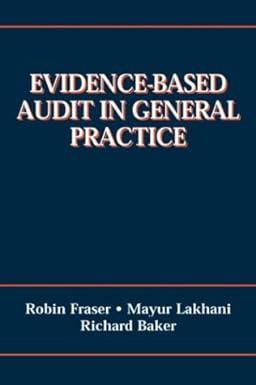Question
Susie started a grocery business on 1/1/2015 with an initial investment of $60,000. She rented a place to open the store. The rent was $1,500
Susie started a grocery business on 1/1/2015 with an initial investment of $60,000. She rented a place to open the store. The rent was $1,500 per month. In order to lock in at the current rate, she was asked to sign a 2-year leasing contract and pay the full amount on the date of the contract.
The following were the transactions of the business for the three months ended 3/31/2015.
1/6 Purchased a used cargo van for $2,000 cash 1/9 Purchased goods on credit from suppliers for $5,000 1/16 Paid wages $600 1/20 Purchased goods for cash $1,800 1/24 Sold goods on credit to Happiness for $2,100, and the credit terms are 2/15, n/60. 1/30 Paid wages $600 2/4 Sold goods on credit to Mrs. Green for $1,600, and the credit terms are 2/10, n/30. 2/6 Paid half of its account payable with cash. 2/9 Happiness paid off the money they owe. 2/13 Paid wages $600 2/18 Purchased goods on credit from suppliers for $7,000 2/25 Sold goods for cash $2,500 2/26 Mrs. Green paid back the money she owed 2/27 Paid wages $600 3/1 Returned defective goods to suppliers and was credited $400 3/4 Sold goods on credit to Happiness for $5,000 3/12 Paid wages $600 3/26 Paid wages $600 3/31 Accrue wage of $500.
Requirements
1. Perform the entire accounting cycle (no need to prepare financial statements). You can stop at Step 9, the post-closing adjusted trial balance.
2. Calculate the profit margin.
Step by Step Solution
There are 3 Steps involved in it
Step: 1

Get Instant Access to Expert-Tailored Solutions
See step-by-step solutions with expert insights and AI powered tools for academic success
Step: 2

Step: 3

Ace Your Homework with AI
Get the answers you need in no time with our AI-driven, step-by-step assistance
Get Started


